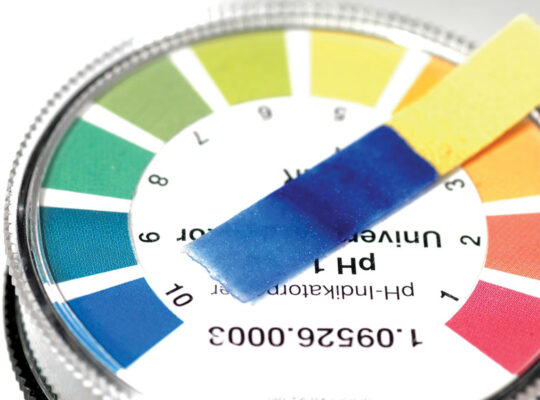Table of Contents
Limit test for Lead
Lead is a most undesirable impurity in medical compounds and comes through the use of sulphuric acid, lead-lined apparatus and glass bottles use for storage of chemicals.
Principle:
The limit test of lead is based on the reaction of lead and diphenylthiocabazone (dithizone) in alkaline solution to form lead dithizone complex which is read in color. Dithizone is green in color in chloroform and leaddithizone complex is violet in color, so the resulting color at the end of the process is red.
Procedure:
| Test sample | Standard compound |
| A known quantity of sample solution is transferred in a separating funnel | A standard lead solution is prepared equivalent to the amount of lead permitted in the sample under examination |
| Add 6ml of ammonium citrate | Add 6ml of ammonium citrate |
| Add 2 ml of potassium cyanide and 2 ml of hydroxylamine hydrochloride
Add 2 drops of phenol red |
Add 2 ml of potassium cyanide and 2 ml of hydroxylamine Hydrochloride
Add 2 drops of phenol red |
| Make solution alkaline by adding
ammonia solution. Extract with 5 ml of dithizone until it becomes green |
Make solution alkaline by adding ammonia solution.
Extract with 5 ml of dithizone until it becomes green
|
| Combine dithizone extracts are shaken for 30 mins with 30 ml of nitric acid and the chloroform layer is discarded | Combine dithizone extracts are shaken for 30 mins with 30 ml of nitric acid and the chloroform layer is discarded |
| To the acid solution add 5 ml of standard dithizone solution
Add 4 ml of ammonium cyanide |
To the acid solution add 5 ml of standard dithizone solution
Add 4 ml of ammonium cyanide
|
| Shake for 30 mins | Shake for 30 mins |
| Observe the color | Observe the color |
Observation:
The intensity of the color of the complex depends on the amount of lead in the solution. The color produces in
the sample solution should not be greater than the standard solution. If the color produces in the sample solution is less than
the standard solution, the sample will pass the limit test of lead and vice versa.
Reasons:
Ammonium citrate, potassium cyanide, hydroxylamine hydrochloride is used to make pH optimum so interference and influence of other impurities have been eliminated. Phenol red is used as an indicator to develop the color at the
end of the process. Lead present as impurities in the substance gets separated by extracting an alkaline solution with a dithizone extraction solution.
References:
https://www.14impressions.in/2020/12/different-types-of-limit-tests.html
https://www.web-formulas.com/Formulas_of_Chemistry/Limit_Test_of_Lead.aspx
https://www.slideshare.net/eshadesai5/impurities-and-their-limit-test
https://books.google.com/books?id=l6KHDwAAQBAJ







